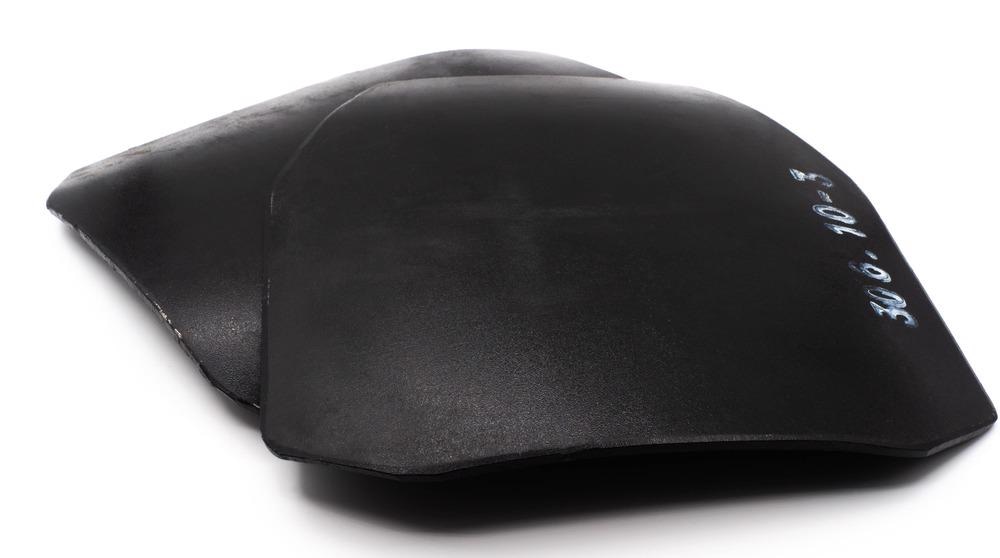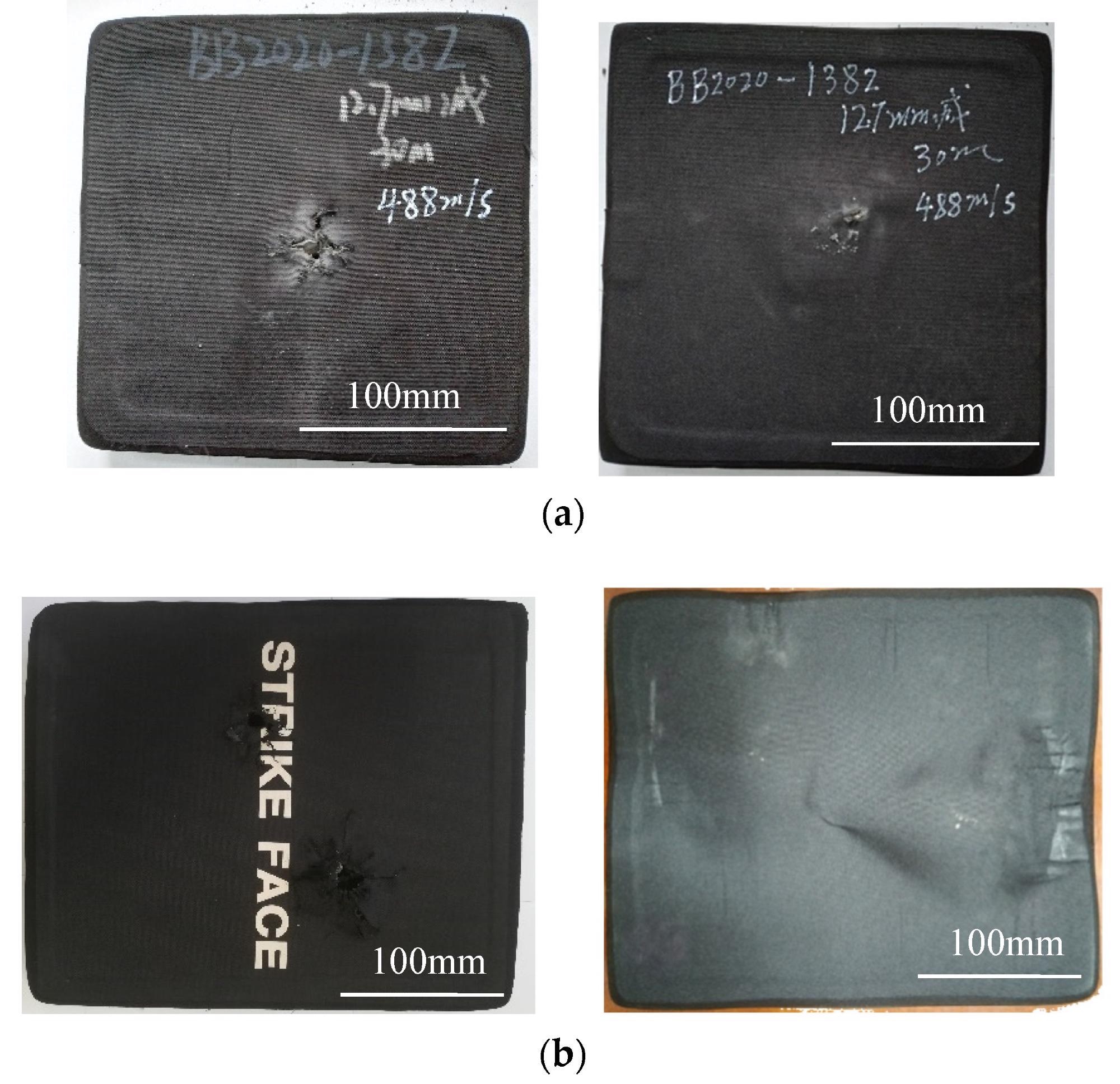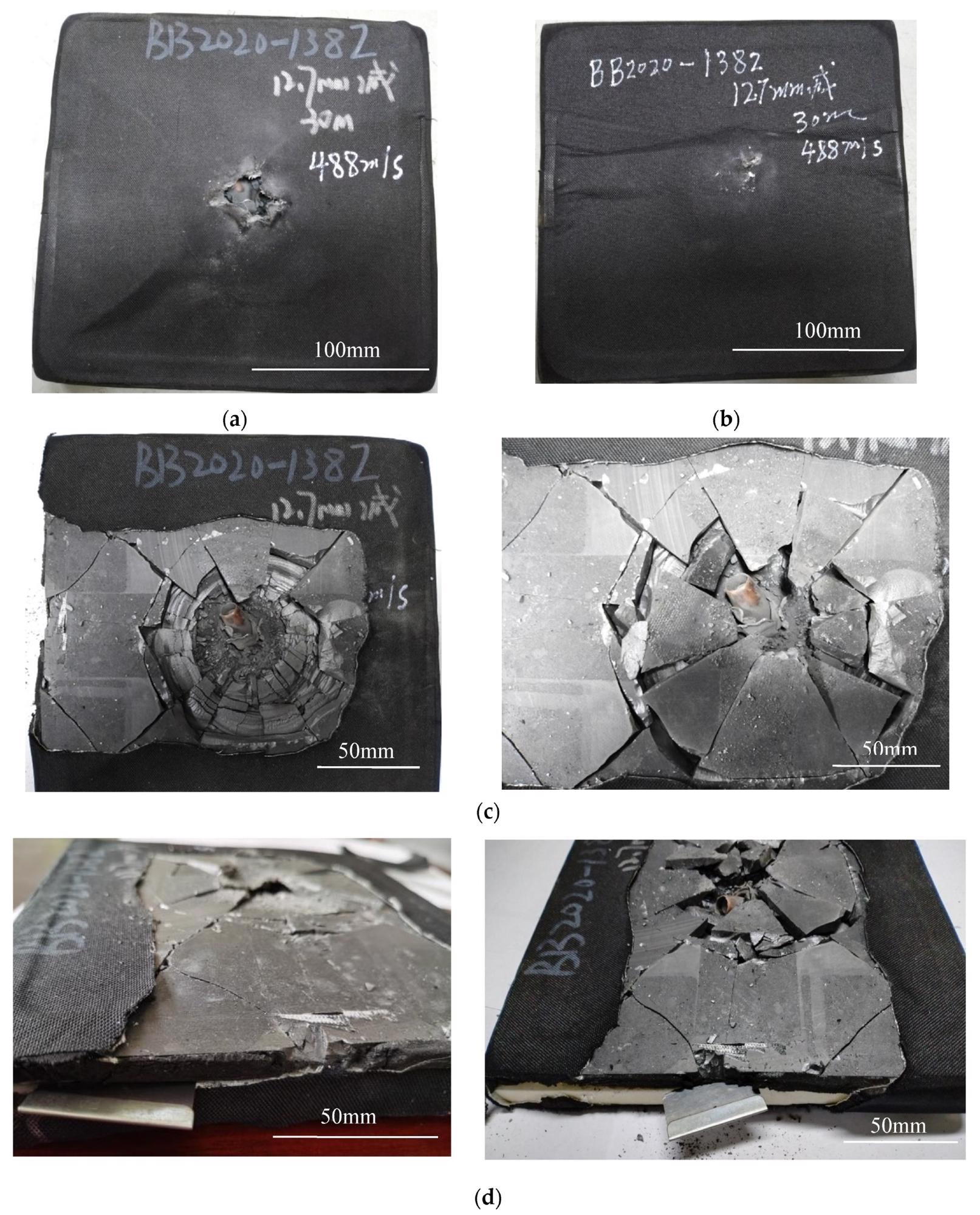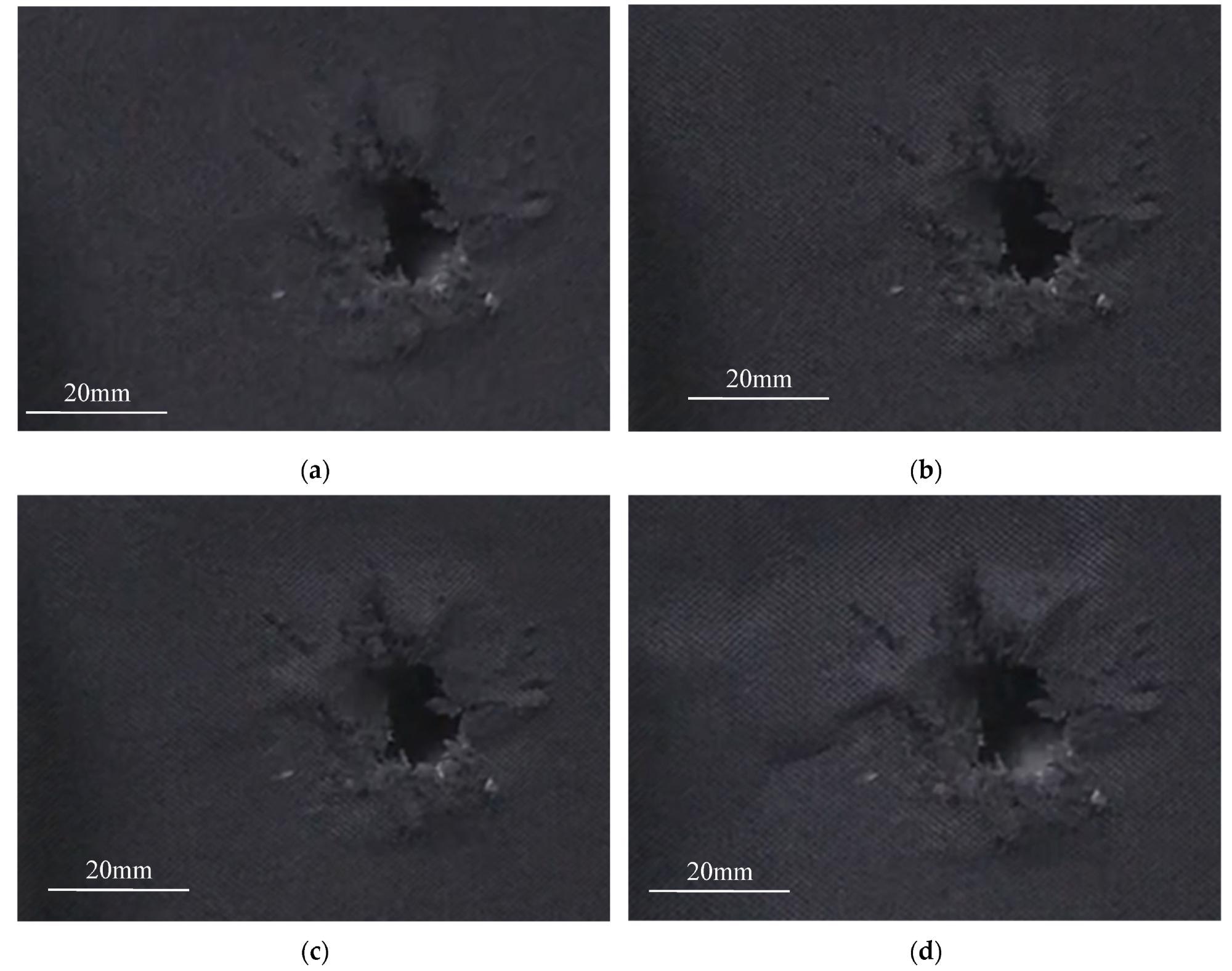.jpg) By Susha Cheriyedath, M.Sc.Reviewed by Skyla BailyJan 27 2022
By Susha Cheriyedath, M.Sc.Reviewed by Skyla BailyJan 27 2022A study recently published in the journal Materials provided a methodology and reference data for designing ceramic/ ultra-high molecular weight polyethylene fiber-reinforced resin matrix composite (UHMWPE) armors with high safety performance.

Study: Investigation on Residual Strength and Failure Mechanism of the Ceramic/UHMWPE Armors after Ballistic Tests. Image Credit: Azovsky/Shutterstock.com
Background
Ceramic materials have low density, high hardness, and wear resistance, but they have poor ability to withstand tension or bending. Thus, when they are used in protective armors that can resist bullet penetration, they need a tough backplate. Owing to their excellent high temperature and impact resistance, ceramics are widely used in armor-piercing firebombs and projectile fragments.

Front and back surfaces of ceramic composite targets after bullet impact. (a) Integral ceramic panel composite target (one bullet hit) Lift-Front, and Right-Back; (b) Spliced ceramic panel composite target (two bullets hit) Lift-Front, and Right-Back. Image Credit: Chen, Z et al., Materials
Ceramic/backing plate armors have a hard, brittle ceramic in the front and a deformable material in the back. The different physical properties of the front and back layers interfere with the penetration of projectile fragments. It is challenging to achieve an optimal configuration and lowest area density for armors used in military armored vehicles, armed helicopters, and body protective gear.
Low-cost, lightweight ceramic/backing plate armors are a relatively better option to resist serious threats. Extensive research has been conducted on the structure, material characteristics, and ballistic damage mechanisms of the armor in search of better and more robust armors.
The Study
In the present study, researchers investigated the ballistic damage mechanism of ceramic/backing plate armor along with its residual bearing capacity.
They first prepared a range of lightweight armors made of ceramic/UHMWPE plates. While the ceramic was the front plate, the UHMWPE was the backing plate, and it was named ceramic/UHMWPE armor. The armors were covered in a high-strength fabric.
Two types of ceramic plates were used - integral or spliced - and they were subjected to shooting experiments, where the team hit the ceramic/UHMWPE armors with one or two bullets and then subjected them to compression testing.
The failure mode of the armors and crack propagation law were explored and compared among different ceramic/UHMWPE armors. As the last step, the researchers introduced residual strength to assess the safety of the armors with impact damage and discussed the factors affecting armor safety.

Compression damage morphology of composite target plate with integral ceramic panel. (a) Front face of specimen after unloading; (b) back face of specimen after unloading; (c) ceramic panel stripped of crack arrest layer: Left-some surface ceramic fragments have been taken away by the crack arrest cloth, and Right-the surface ceramic fragments have been reset; (d) side of composite armor plate stripped of crack arrest cloth. Image Credit: Chen, Z et al., Materials
Results
The results showed that ceramic brittle fracture was the main failure mode of the ceramic/UHMWPE armors. The multiple zigzag patterns observed on the compression curve suggested that the specimens had passed through the following stages: 1) crack propagation, 2) ceramic fragment reorganization, 3) plastic deformation of UHMWPE backing plate, 4) interlaminar tearing, and 5) overall fracture.
The dislocation between ceramic sheets was the main reason for the failure of spliced ceramic/UHMWPE armors. As indicated by the smooth compression curves, no recombination of ceramic fragments or interlayer debonding occurred during the compression.
Ceramic/UHMWPE armors with ballistic damage did not promptly break and fail under the maximum load. The ceramic plates’ structure and thickness affected the residual strength. Under the same structure, an increase in thickness led to an increase in the residual strength, although their relationship was not linear. The residual strength of the spliced armor was higher under the same thickness.
Residual strength was also linked to the number of shots. For instance, the residual strength of the armor after being hit by two bullets was only one-third of its strength after being hit by one bullet.

Morphology of target plate with spliced ceramic panel during loading test. (a) At the beginning of loading; (b) under 50% of the maximum load; (c) under 80% of the maximum load; (d) under the maximum load. Image Credit: Chen, Z et al., Materials
Conclusions
In this study, a series of lightweight ceramic/UHMWPE armors were produced. The shooting test showed that the bulletproof performance of the prepared armors met the American bulletproof standard requirements.
Owing to the different sizes and configurations of the ceramics, the armors showed property variations in compression failure behavior, ballistic damage mechanism, and residual bearing capacity. The ceramic/UHMWPE armors showed different compression test results and compression failure modes in ballistic tests because the ceramic plates were of different configurations. The zigzag phases seen on the compression curve confirmed that the ceramic fragments formed a pseudo-integral ceramic plate, which was soon destroyed rapidly.
The spliced ceramic/UHMWPE armor exerted its bearing capacity entirely, which is confirmed by its smooth curve in the compression test with a relatively steep slope that is similar to the curve of a single uniform material. All the designed armors initially deformed and then broke under maximum load, which indicates that even after bullet shooting damage, the ceramic/UHMWPE armors could function safely through deformation and hence protect property and life.
Residual strength is a competent parameter in terms of life prediction and structural safety assessment after ballistic damage. The bearing capacity of the prepared armor was influenced by the thickness, configuration, and damage mode of the ceramics. During the production of protective armor equipment, factors such as service conditions, manufacturing cost, and protection level required need to be considered while deciding on the thickness of the ceramic plate.
Disclaimer: The views expressed here are those of the author expressed in their private capacity and do not necessarily represent the views of AZoM.com Limited T/A AZoNetwork the owner and operator of this website. This disclaimer forms part of the Terms and conditions of use of this website.
Source:
Chen, Z.; Xu, Y.; Li, M.; Li, B.; Song, W.; Xiao, L.; Cheng, Y.; Jia, S. Investigation on Residual Strength and Failure Mechanism of the Ceramic/UHMWPE Armors after Ballistic Tests. Materials 2022, 15, 901. https://www.mdpi.com/1996-1944/15/3/901/htm